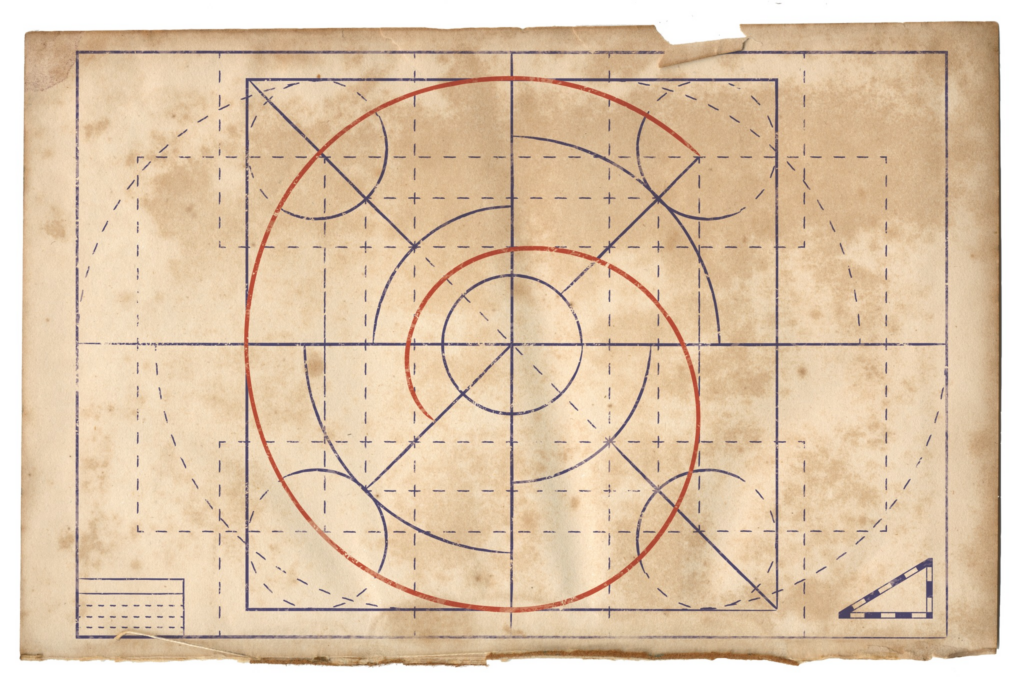The Jrusteli Pattern is a city plan found mainly in the coastal regions. It has a central market, a nearby public and temple complex, and straight main streets. The city becomes a microcosm, with the temple complex as an axis mundi, the main streets having magical significance, and energy (and people) able to move about.
Wilms, an Esrolian architect and sculpter, mastered the Jrusteli Pattern and took it to new artistic and magical heights under the patronage of his friend Sartar. His first city, called Wilmskirk (or Wilm’s Church), directly followed the Jrusteli Pattern. Wilmskirk is considered to be the “artists’ city” and scholars and artists from Kethaela to the Lunar Heartlands make pilgrimages there for inspiration. The Quivin Mountains form the backdrop of the City Temple to Orlanth Rex atop a rocky hill, and sculptures of heroes, deities, and princes decorate the city.
In his next two cities (Jonstown and Swenstown), Wilms worked with the plan in conjunction with the local geography. Neither city quite achieved what Wilms hoped for, although both were more functional than Wilmskirk they lacked its beauty and form.
Wilms’ masterpiece was Boldhome. His architecture only enhanced the natural beauty of the setting. Working with dwarves instead of human masons, Boldhome is an architectural wonder (and accepted as such by Lhankor Mhy and Irrippi Ontor). The Jrusteli Pattern is present there, but made to complete the natural magic of the location.
However, Wilms always claimed that Duck Point was his true masterpiece, even though that city barely follows the Pattern and is largely dismissed by most Sartarites and nearly all foreigners.
![]()
![]()
Who created the Jrusteli Pattern? Do other cities utilize the Jrusteli Pattern like Nochet or New Pavis?
I think it was new in that the Jrusteli had to come up with a plan to found urban colonies on a big scale, which was a “new thing”. Like Hippodamus, they like likely looked at “what are the elements of a good city” and codified them, even if all of those elements pre-existed.
I suspect the pattern was codified around the time Jrustela was settled, in the early 600s, and as the Jrusteli founded cities along the coasts, cities like the Machine City, Lyket, Leskos, Robcradle, Feroda, Hermat, Jadnor, etc. all followed it. Most of those were in ruins in the Third Age, but no doubt Belintar modified this plan for his City of Wonders.
Glamour to me is something more like al-Mansur’s Round City of Baghdad, which comes out of a different (Yelmite) tradition. Same with the rebuilt cities of the Fifth Wane, when Hon-eel and others built dozens of cities on the ruins of the old. She might have adapted the Round City to an Earth Rune, and in a fit of parallel evolution come up with something that closely resembles the Jrusteli Pattern. But Hon-eel was always pretty awesome that way.
I have lived in grid cities most of my life (which includes most of Berlin). Prefer them greatly to organic sprawls. So one point for the Jrusteli!
So remember that in Wilmskirk and Boldhome, statues are going to be common. These are not painted wood planks, but statues carved by master stone masons and brightly painted.

